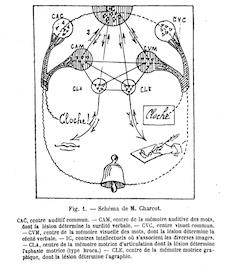When the outside world is silent, all sorts of sounds can come to mind: inner voices, snippets of past conversations, imaginary debates, retrospective witticisms, cherished melodies and annoying earworms. What should we make of such sonic companions? My book project investigates a period when these and other aural phenomena prompted far-reaching debates in the academic world. Case studies from Paris, Vienna, and Berlin show that the identification of the auditory cortex in late nineteenth-century neuroanatomy affected numerous disciplines across the sciences and humanities. Each now created sound-related concepts that were central to its epistemological agenda. Ferdinand de Saussure interpreted the “acoustic image” as a key to human language, while Sigmund Freud approached the human psyche through the linguistic unconscious, and similar processes unfolded across an enormous range of disciplines. In its various incarnations, “thinking with sound” tied together an academic landscape that was fragmenting into ever more specialized fields of research. It did so not only by mapping out common epistemic ground, but also by binding together theoretical with practical knowledge. The scholars and scientists I present responded creatively to the new cultures of music and audio communication arising around 1900, and to recording technologies that generated alternate modes of simulating, collecting, and comparing sound data. In turn, their auditory knowledge was applied in social, aesthetic, and industrial domains outside the academic realm. Through these conjunctions, the project illuminates a moment in time that gave rise to many of the structures, theories, and fields of application underlying recent trends such as Sound Studies. More generally, it offers a deeper understanding of today’s second “sonic turn” in science and scholarship.

Model for the memory of a bell sound, after Jean-Martin Charcot, in: Gilbert Ballet, Le langue intérieur et les diverses formes de l’aphasie. Paris: Félix Alcan, 1888, 25.
Project
(2015-)
